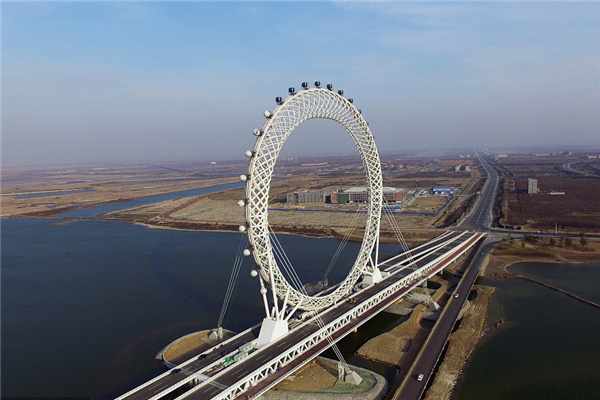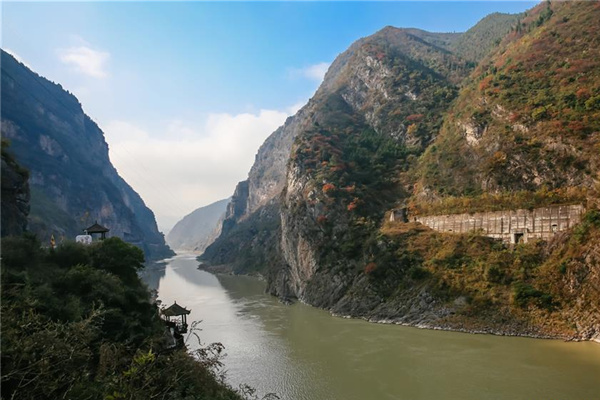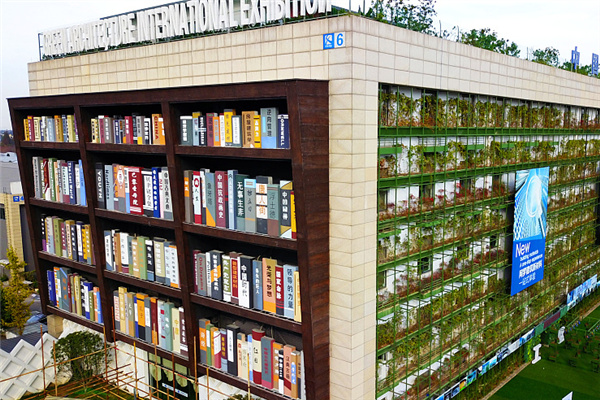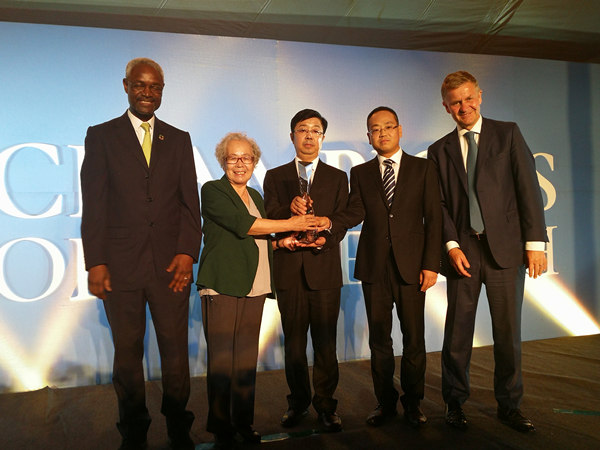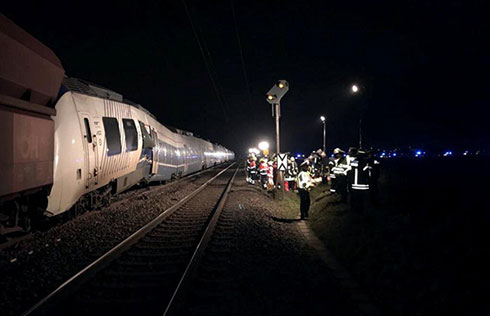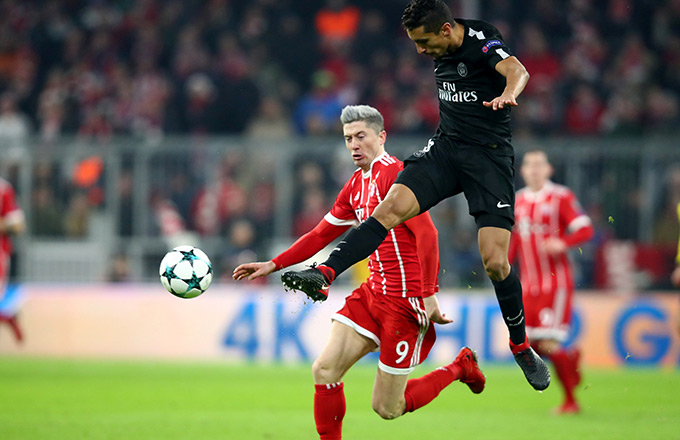

|
Indian business people at a trade show in Beijing. CFP |
M.V. Rabade's trip to Yunnan province at the beginning of April was memorable, not only because of the breathtaking landscape, but also the mature infrastructure development in the country's southwest province.
He got a call from his boss at 16,000 feet while he was climbing the Jade Dragon Snow Mountain. The cell phone signal was perfectly clear. And before returning to Beijing, he printed out all the pictures in Lijiang, an ancient town 600 km from Kunming, capital city of the province.
"That's what we want to have in India," said Rabade, chief representative of Adani Group in China. Adani is one of India's largest international trading and infrastructure development companies.
Power shortage is a chronic problem facing India for a long time while China is moving much faster in infrastructure development.
"India and China both need each other for growth," Rabade said. "Chinese capital and technology are both well suited for the Indian market."
While the global financial crisis is certain to hammer the GDP growth drastically across North America and Europe, China and India have been appearing, side by side, on news media more frequently than ever.
The two countries have been hunting in the US to recruit high-end talent after Wall Street axed more than 100,000 jobs. Media reports said the financial crisis might be the best opportunity for China and India to find experienced talent for their own financial institutions.
Both the countries will be the only two big economic powerhouses to maintain at least 5 percent GDP growth while most of the Western countries may see a negative growth. The two countries, which are home to one-third of the world's population, are also pursuing a bigger say in multilateral financial discussions and relevant policy-making processes.
"In this time of global financial and economic crisis, there is need for stronger cooperation and coordination between India and China," Nirupama Rao, India's ambassador to China, said recently at a seminar in Beijing.
In fact since external demand drives a major part of Asia's growth, the region's two giants - China and India - are also seeing their rapid economic development curtailed by the global downturn.
The Asian Development Bank (ADB) has forecast that developing Asia's economic growth would slow by almost half this year. The government stimulus packages are expected to help China's economy grow by 7 percent this year, which is well below the average 10 percent growth seen in recent years. India's economy is expected to grow at 5 percent this year, also far below its average 9 percent growth in the past few years, ADB said.
"A global crisis requires a global solution. A global cooperation rather than retreating from globalization is the best approach to solving the crisis," Rao said.
Ironing frictions
Bilateral trade between China and India has grown at an impressive pace from about $5 billion in 2002 to over $50 billion in 2008 - a ten-fold growth over six years. China became India's largest trading partner last year, while India is China's largest trade partner in South Asia.
"By 2025, it is highly possible that the China-India economic ties through trade, technology and investment linkages may be one of the most important bilateral relations of the world," Rao said.
However, trade frictions between the two countries haven't eased much. Among developing countries, India has filed the largest number of anti-dumping cases against China. The trade disputes seem to be getting worse amid the global economic downturn.
India blocked Chinese toy imports for safety reasons in January. China raised India's toy ban issue during a meeting of the World Trade Organization's technical barriers to trade committee in March.
Since October last year India has launched 17 trade remedy investigations against Chinese exports including 10 anti-dumping investigations, one anti-subsidy case and six cases for safeguard measures, according to statistics from China's Ministry of Commerce. The products include industrial chemicals, steel, tires, yarn and fabric.
Analysts said the disputes partly reflect the jostling of the two emerging market goliaths in a slowing global economy.
The "structural imbalance" in Sino-Indian trade is a major reason for the disputes, said Zhao Gancheng, director of the South Asia research department at the Shanghai Institute for International Studies.
Chinese exports to India cover a wide range of products, while India's exports to China are less diversified and are mainly raw materials.
"Another reason for the intensified trade remedy investigations against China was India's general election as politicians tried to woo voters by protecting domestic industries," Zhao was quoted as saying by the Shanghai Morning Post.
India's month-long general election started on April 16.
"These issues (disputes) will come up once in a while. All that it requires is a government-to-government mechanism to discuss this and sort it out. Once this type of mechanism is established, such problems can be solved. As long as they can be solved, there is not much to worry about," said Chandrajit Banerjee, director general of the Confederation of Indian Industry (CII).
The Chinese and Indian governments agreed in March to set up a working group that would meet every few months on trade issues before they reach the WTO.
"What we really need to dispel is the lack of mutual trust between China and India," Banerjee said.
The two countries fought a border war in 1962, which India lost, and the border disputes still remain unsettled.
"It is hard for India to trust China until the border disputes are resolved," said Zhang Guihong, professor, Center for South Asian Studies, Fudan University, in a report from China Trade News.
"A major problem facing the two countries is the lack of a mechanism for cooperation. Although the development of the two countries will play a significant role in shaping the Asian economy in the future, there is no regional institution in which the two economies can play a leading role," Zhang said.
A growing competition between the dragon and the elephant has also emerged as they are accelerating their presence in each other's dominant areas in order to become more versatile. For example, India is becoming proficient in high-end manufacturing, while China is vigorously developing its outsourcing service industry. Dalian, a coastal city in Northeast China, has mapped out an ambitious plan to become a global outsourcing center.
"Through exchanges, I believe we would be able to squash that (lack of trust) to a certain degree. If we can look at the complementarities and how we can share the economic development agenda, we would be able to fend this off," said Banerjee.
'C' for complementary
Anil K Gupta, professor of strategy and organization at the Smith School of Business, the University of Maryland, wrote in his book Getting China and India Right: Strategies for Leveraging the World's Fastest Growing Economies for Global Advantage that China and India are the only two countries that constitute four realities that are strategically crucial for global enterprises. Both countries provide mega-markets for almost every product and service; both have platforms that will dramatically reduce a company's global cost structure; both have platforms that will significantly boost the company's global technology and innovation base; and both are springboards for the emergence of new fearsome global competitors.
"We should work together to make full use of these strengths. I always believe C means complementary not competition," said J J Shrikhande, chairman, India Business Forum.
The India Business Forum was launched in Beijing by CII in mid-April as an initiative that regularly provides a platform for bringing together various Indian companies in China for networking, cooperation and knowledge sharing. It will also act as a platform for networking with Chinese companies interested in doing business with India, think tanks and policy makers in China. CII has launched the same initiative in the US, South Africa and Singapore.
"China and India should further improve their business environment and market access for companies to invest in each other's home turf," Wang Jinzhen, vice-chairman, China Council for Promotion of International Trade, said at the launch ceremony of the forum.
"Another area where the two countries can cooperate is in making joint investments in a third country. Indians are more knowledgeable in the international markets than the Chinese people while China has the technology and design," Wang said.
Indian investment in China is close to $900 million, while Chinese investment in India is less than $100 million, according to statistics from the Indian Embassy in Beijing.
"There is huge potential for Chinese companies to take up projects in India's infrastructure development," said Shrikhande, who is also China head of Indian construction and engineering firm Larsen & Toubro Ltd.
India has a huge requirement for infrastructure across sectors such as power, roads, ports, airports and telecommunications. It has been estimated that India can absorb investments of $500 billion in infrastructure sector over the next five years. China's experience and expertise developed through an over two-decade infrastructure construction boom would certainly help India achieve its goal.
For instance, India has been plagued by power shortage as the overall growth in the Indian industry far outpaces the growth of its power sector. China added 283,000 mw capacity in the past five years, while India only added 21,100 mw during the same period, Rabade said.
During its 10th Five-Year Plan, which ended in 2007, India achieved only 51 percent of the projected capacity addition of 41,110 mw, Rabade said. "For the 11th Plan period, capacity addition of 78,577 mw is planned. The question is - will we achieve this?" he said.
Rabade said India's huge power demand should make full use of China's strength in high production capacity, standard design and short delivery. Chinese products and technologies also cost less than other international power plant manufacturers.
Currently Shanghai Electric and Dongfang Electric are two major Chinese electrical equipment manufacturing companies operating in India.
"India is one of the most important overseas markets for us," said an official from Shanghai Electric who declined to be named. The Hong Kong-listed company has presence in 12 Indian states.
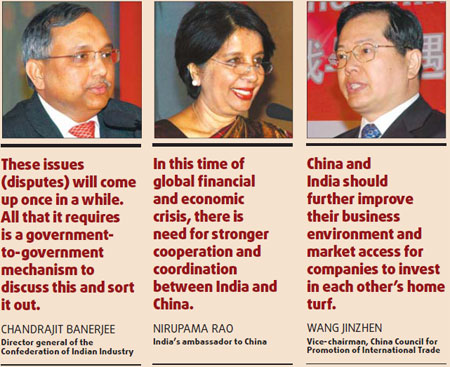

(China Daily 05/04/2009 page12)


